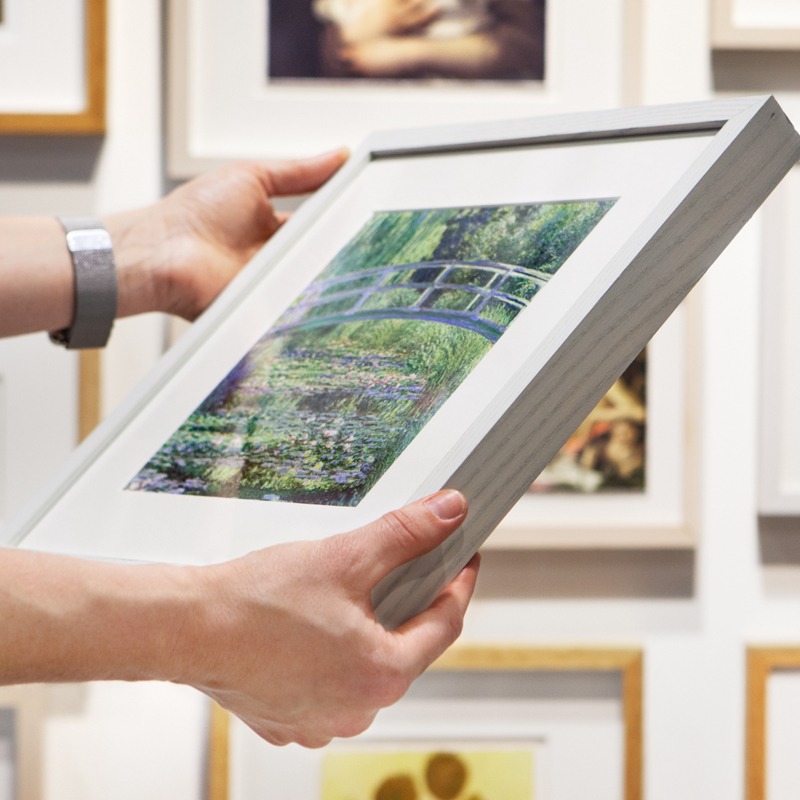Thomas Jones, 'A Wall in Naples', about 1782
About the work
Overview
A Wall in Naples is not much larger than a postcard. The shuttered windows, irregular pattern of scaffolding holes, patchy cement and water stain from chamber pots thrown out of the window are the freshly observed details of a particular wall, although Jones may have adjusted these slightly to enhance his composition. The sketch is painted from a close viewpoint, probably across the narrow street from Thomas Jones’s roof terrace. The rectangle of sky is intensely blue suggesting that it was a very hot day in mid-summer, probably in August 1782.
The small oil sketches on paper painted in Naples during 1782 have become the best known of all the work that Jones painted during his seven-year stay in Italy. A Wall in Naples is one of five studies of buildings from high viewpoints, which are considered the most original work of his career.
Key facts
Details
- Full title
- A Wall in Naples
- Artist
- Thomas Jones
- Artist dates
- 1742 - 1803
- Date made
- About 1782
- Medium and support
- Oil on paper, mounted on canvas
- Dimensions
- 11.4 × 16 cm
- Acquisition credit
- Bought, 1993
- Inventory number
- NG6544
- Location
- Room 39
- Collection
- Main Collection
- Frame
- 20th-century Replica Frame
Provenance
Additional information
Text extracted from the ‘Provenance’ section of the catalogue entry in Judy Egerton, ‘National Gallery Catalogues: The British Paintings’, London 2000; for further information, see the full catalogue entry.
Exhibition history
-
2009Corot to Monet: A Fresh Look at Landscape from the CollectionThe National Gallery (London)8 July 2009 - 20 September 2009
-
2013Through European Eyes: The Landscape Oil SketchThe National Gallery (London)6 February 2013 - 28 April 2013
-
2014Artistic Exchanges: Corot, Costa, LeightonThe National Gallery (London)7 May 2014 - 3 September 2014
-
2018Tacita Dean: STILL LIFEThe National Gallery (London)15 March 2018 - 28 May 2018
-
2024Napoli OttocentoScuderie del Quirinale27 March 2024 - 16 June 2024
Bibliography
-
1959J.A. Gere, 'An Oil-Sketch by Thomas Jones', British Museum Quarterly, XXI/4, 1959, pp. 93-4
-
1968Romantic Art in Britain: Paintings and Drawings 1760-1860, Detroit 1968
-
1970R.C.B. Oliver, The Family History of Thomas Jones the Artist of Pencerrig, Radnorshire, Llandysul 1970
-
1970J.A. Gere, 'Thomas Jones: An Eighteenth-Century Conundrum', Apollo, XCI, 1970
-
1973A. Blunt, 'Recorders of Vanished Naples, I', Country Life, 1973
-
1981R. Causa, 'A British Painter in Naples of Ferdinand Iv', Campania, 1981
-
1981D. Bull, Classic Ground: British Artists and the Landscape of Italy, 1740-1830 (exh. cat. Yale Center for British Art, 29 July - 20 September 1981), New Haven 1981
-
1981P. Galassi, Before Photography: Painting and the Invention of Photography (exh. cat. Museum of Modern Art, 9 May - 5 July 1981), New York 1981
-
1984P. Morgan, 'Thomas Jones of Pencerrig', Transactions of the Honourable Society of Cymmrodorion, 1984, pp. 51-76
-
1985L. Gowing, The Originality of Thomas Jones, London 1985
-
1986J. Egerton, 'Book Review of Lawrence Gowing "The Originality of Thomas Jones"', The Burlington Magazine, CXXVIII/1000, 1986
-
1987R. Wollheim, Painting as an Art, London 1987
-
1988F.W. Hawcroft, Travels in Italy 1776-1783: Based on the Memoirs of Thomas Jones (exh. cat. Whitworth Art Gallery, 7 October - 10 December 1988), Manchester 1988
-
1991P. Galassi, Corot in Italy: Open-Air Painting and the Classical-landscape Tradition, New Haven 1991
-
1993G. Belli, Romanticismo: Il nuovo sentimento della natura (exh. cat. Museo d'arte moderna e contemporanea di Trento e Rovereto and Palazzo delle Albere, 15 May - 29 August 1993), Milan 1993
-
1994National Gallery, The National Gallery Report: April 1993 - March 1994, London 1994
-
1994A.O. Cavina, I paesaggi della ragione: La città neoclassica da David a Humbert de Superville, Turin 1994
-
1996P. Conisbee et al., In the Light of Italy: Corot and early Open-Air Painting (exh. cat. National Gallery of Art, Washington, 26 May - 2 September 1996; Brooklyn Museum, 11 October 1996 - 12 January 1997; Saint Louise Art Musuem, 21 February - 18 May 1997), New Haven 1996
-
1998J. Egerton, The British School, London 1998
-
1998J. Egerton, 'Author's Picture Choice', National Gallery News, 1988
-
2000Egerton, Judy, National Gallery Catalogues: The British Paintings, revised edn, London 2000
-
2001
C. Baker and T. Henry, The National Gallery: Complete Illustrated Catalogue, London 2001
-
2004P. Conisbee, S. Faunce and Y. Kohari, Plein-air painting in Europe 1780-1850 (exh. cat. Shizuoka Prefectural Museum of Art, Shizuoka; Art Gallery of New South Wales, Sydney; National Gallery of Victoria, Melbourne), Shizuoka 2004
Frame
Made in England in 1994, this is a replica frame in the style of an eighteenth-century Italian bolection profile. At the inside edge of the gilded frame is a cloth-covered slip frame, which has been painted.
About this record
If you know more about this work or have spotted an error, please contact us. Please note that exhibition histories are listed from 2009 onwards. Bibliographies may not be complete; more comprehensive information is available in the National Gallery Library.



